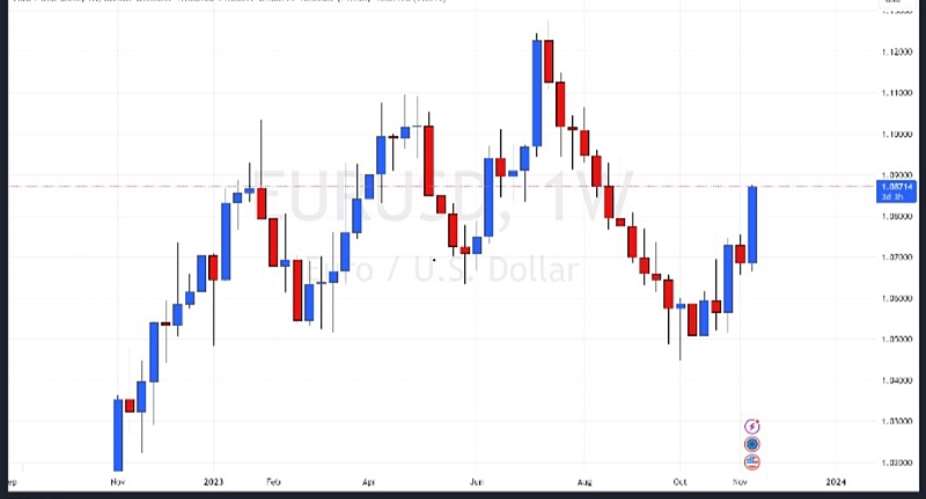In a current state of financial flux, the US dollar is in a significant and unexpected decline against all major currencies, stirring waves of uncertainty throughout international financial markets. The once-dominant position of the dollar is currently being challenged, prompting economists, investors, and governments to grapple with the implications of this abrupt shift.
At present, the dollar's value against major currencies such as the Euro, Japanese Yen, British Pound, and the Chinese Yuan is experiencing a notable decrease. This current decline is attributed to a combination of factors, including concerns over inflation rates in the United States, geopolitical tensions, and shifts in global trade dynamics.
The impact of the weakening dollar is currently swift and profound, with global markets experiencing significant fluctuations. Stock exchanges worldwide are currently subjected to heightened volatility as investors navigate the sudden change in currency dynamics. Simultaneously, commodity prices, closely tied to the dollar, are undergoing substantial adjustments, affecting industries ranging from oil to precious metals.
These current repercussions extend beyond financial markets, impacting nations currently engaged in international trade. Export-driven economies are currently observing how the changing currency landscape may impact their competitiveness in the global marketplace. Import-dependent nations are currently grappling with the challenge of potentially increased costs for foreign goods.
In an unexpected twist, the narrative will begin shifting as other major currencies will start experiencing a decline against the resurging US dollar in the future. Initially gaining ground, the Euro, Yen, Pound, and Yuan will face their own set of challenges as the dollar regains strength. Economists will be struggling to explain this unforeseen development, citing factors such as market speculation, central bank interventions, and the intricate web of global economic interconnectedness.
Governments and financial institutions worldwide will explore strategies to stabilize their currencies and mitigate the impact of these rapid fluctuations in the future. Central banks will closely monitor exchange rates, and some will consider interventions to moderate the volatility. Meanwhile, investors will be reassessing their portfolios and adjusting their strategies to adapt to the evolving economic climate.
As the global financial community grapples with this unprecedented scenario in the future, the coming weeks/months will likely be marked by intense scrutiny, strategic recalibration, and efforts to restore a semblance of stability to the world's economic order. The falling dominoes of currency values will underscore the intricate interplay of global financial markets and the need for vigilant economic management in an increasingly interconnected world. The anticipation for the future is that the dollar will eventually reverse its current trend, potentially causing all major currencies to bleed in the aftermath.
By
Bright Peter Dzah
Corresponding E-mail: [email protected]





 Court dismisses Serwaa Amihere case against Henry Fitz, two others
Court dismisses Serwaa Amihere case against Henry Fitz, two others
 Stolen BRVs: Bi-partisan parliamentary probe non-negotiable — Dr. Omane Boamah
Stolen BRVs: Bi-partisan parliamentary probe non-negotiable — Dr. Omane Boamah
 Bawumia begins regional campaign tour on Monday
Bawumia begins regional campaign tour on Monday
 With great urgency backed by verifiable data, facts and figures dismiss COCOBOD,...
With great urgency backed by verifiable data, facts and figures dismiss COCOBOD,...
 EC’s statement on obsolete BVDs discovery “lies, half-truths, pure fantasies” – ...
EC’s statement on obsolete BVDs discovery “lies, half-truths, pure fantasies” – ...
 Nalerigu court impound vehicles of DCE, Director of Chereponi district for owing...
Nalerigu court impound vehicles of DCE, Director of Chereponi district for owing...
 Cop, 7 others grabbed over $523,000 Gold Scam
Cop, 7 others grabbed over $523,000 Gold Scam
 Akufo-Addo’s driver wins Dadekotopon NPP Parliamentary Primary
Akufo-Addo’s driver wins Dadekotopon NPP Parliamentary Primary
 Investigate, jail persons liable for GRA-SML contract – Manasseh
Investigate, jail persons liable for GRA-SML contract – Manasseh
 Lawyer wins Akan NPP Parliamentary Candidate primary
Lawyer wins Akan NPP Parliamentary Candidate primary
